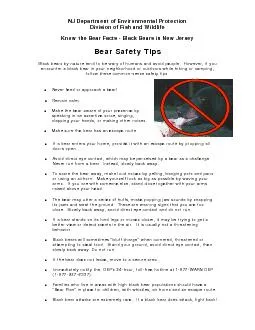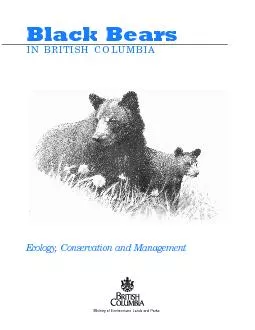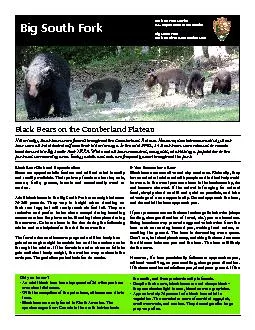PDF-Be aware of bears The black bear Ursus americanus is the only bear species native to New
Author : alexa-scheidler | Published Date : 2014-12-04
Although bears live primarily in forested areas they sometimes wander into urban areas Con57375icts between people and bears have increased as suburban sprawl encroaches
Presentation Embed Code
Download Presentation
Download Presentation The PPT/PDF document "Be aware of bears The black bear Ursus a..." is the property of its rightful owner. Permission is granted to download and print the materials on this website for personal, non-commercial use only, and to display it on your personal computer provided you do not modify the materials and that you retain all copyright notices contained in the materials. By downloading content from our website, you accept the terms of this agreement.
Be aware of bears The black bear Ursus americanus is the only bear species native to New: Transcript
Download Rules Of Document
"Be aware of bears The black bear Ursus americanus is the only bear species native to New"The content belongs to its owner. You may download and print it for personal use, without modification, and keep all copyright notices. By downloading, you agree to these terms.
Related Documents














